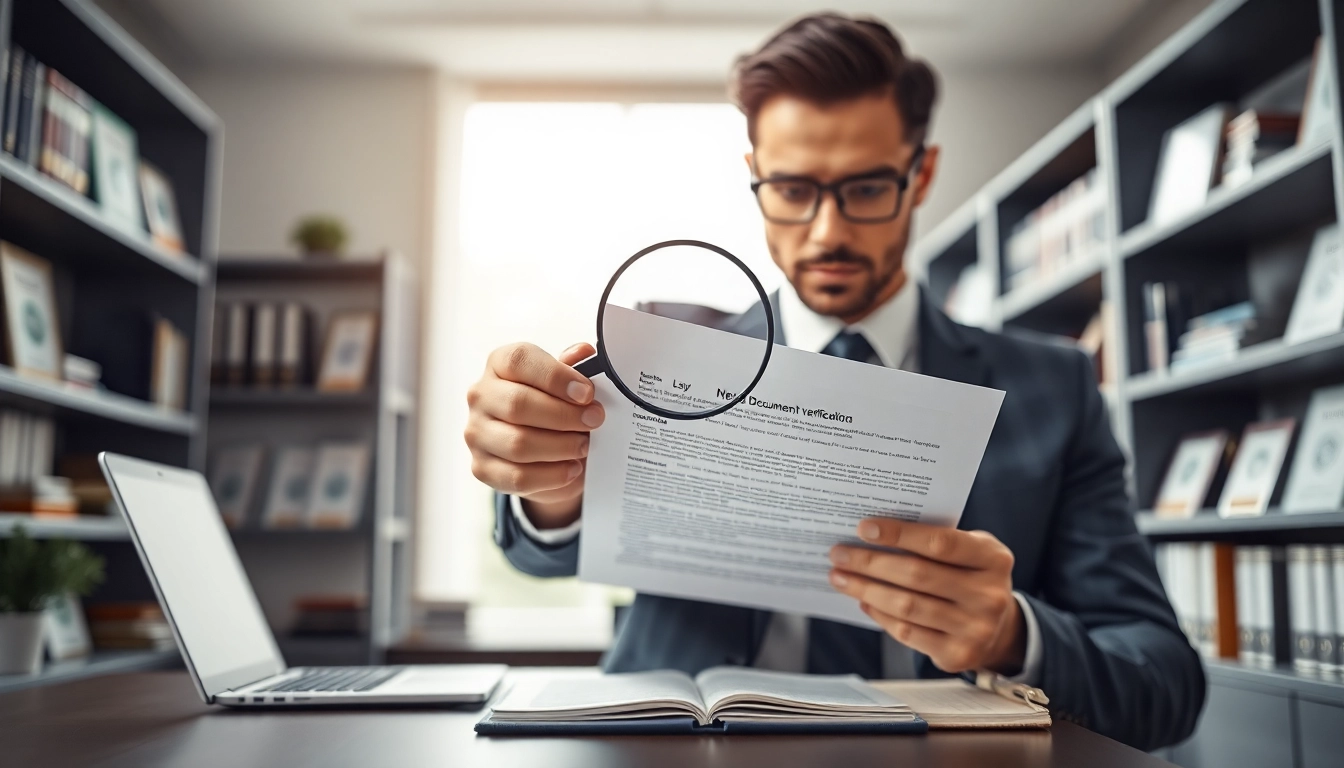Understanding Document Authenticity
In today’s world, the authenticity of documents is crucial for maintaining trust in personal and professional transactions. Whether it’s a legal contract, academic certificate, or identification document, the ability to determine if a document is real can have significant implications. But how do I know this document is real? Understanding the nuances of document authenticity can empower individuals and organizations to safeguard against fraud and deception.
What Makes a Document Real?
A real document is one that originates from a legitimate source, possesses the required features of authenticity, and meets the specifications relevant to its type. Key components often include:
- Official Watermarks: Many documents come with watermarks embedded in them. These are often visible only under certain lighting or angles, lending authenticity.
- Signature and Seals: Authorized signatures and official seals indicate that appropriate validating parties approved the document.
- Printed Components: Quality printing techniques are often a sign of authenticity. Many legitimate documents utilize advanced printing processes that are hard to replicate.
- Serial Numbers: Unique identifiers like serial numbers often authenticate documents like birth certificates and diplomas.
Common Signs of Forgery
Detecting forgery can sometimes be a straightforward process if one knows what to look for. Key indicators might include:
- Inconsistent Formatting: If fonts, margins, or alignments appear inconsistent throughout the document, this could signal forgery.
- Color Variations: Discrepancies in color can arise from different printers being used, indicating manipulation or falsification.
- Missing Elements: Legitimate documents typically have specific features, such as watermarks or microtext. Their absence can raise suspicions.
- Unusual Annotations: Handwritten notes or signatures that appear out of place or mismatched with known standards may indicate a fake.
The Importance of Verification
Verification helps confirm the trustworthiness of documents. It can prevent a myriad of issues, including legal disputes, identity theft, and financial loss. The instability that comes with relying on counterfeit documents can harm an individual’s or organization’s reputation and financial well-being. Thus, establishing a verification routine is essential.
Methods of Document Validation
Visual Inspection Techniques
One of the simplest yet effective ways to verify document authenticity is through visual inspection. This requires careful scrutiny of various elements:
- Light Test: Holding a document up to the light can reveal hidden watermarks or other security features not visible under normal illumination.
- Magnification: Using a magnifying glass can allow inspectors to check fine details, such as microprinting, which is often present in official documents.
- Texture Examination: Authentic documents typically have a unique texture that counterfeits may struggle to replicate.
Technological Tools for Verification
The evolution of technology has provided numerous tools to assist in document verification.
- Barcode Scanners: Many documents now include barcodes that can be scanned to verify authenticity quickly.
- Document Verification Software: Advanced software solutions can analyze and verify the authenticity of digital documents by comparing them against secure databases or known standards.
- Image Forensics: This technology examines the digital components of images to discern alterations or tampering.
Expert Authentication Services
For those who require a higher level of assurance, expert authentication services can be employed. These services often involve professionals who specialize in document analysis, utilizing a combination of experience and technology to assess authenticity.
Such professionals may perform detailed examinations, including chemical tests to analyze ink composition and paper quality. Engaging such services can be especially beneficial for high-stakes scenarios, such as legal proceedings or significant financial transactions.
Legal Implications of Document Fraud
Consequences of Using Fake Documents
The consequences of using fake documents can be severe. Individuals may face criminal charges, including fraud or forgery, leading to fines, penalties, or even imprisonment. Businesses caught utilizing counterfeit documents can suffer reputational damage and financial losses, as well as potential legal actions from affected stakeholders.
How to Report Document Fraud
If you suspect document fraud, it’s crucial to report it to the appropriate authorities. Depending on the context, this could involve:
- Law Enforcement: Submitting a report to local police can initiate an investigation.
- Regulatory Bodies: Institutions like banks or financial services may require reporting to safeguard their operations.
- Industry Authorities: If the fraudulent document pertains to a specific industry (like academia or healthcare), notifying relevant professional bodies is often necessary.
Legal Resources for Individuals and Businesses
Individuals and businesses facing document fraud issues should be aware of available legal resources, including:
- Legal Aid Services: Many organizations offer assistance to individuals dealing with fraud.
- Consulting with a Lawyer: Seeking legal counsel can provide tailored guidance based on the specific situation.
- Regulatory Commissions: Commissions or bodies related to your industry may have additional resources and support structures to initiate legal action.
Best Practices for Ensuring Document Authenticity
Educating Yourself and Your Staff
Education is the key to prevention. Organizations should aim to educate both themselves and their staff about the common signs of forgery and the various verification methods available. Regular training sessions can help keep everyone informed about new fraud trends and technologies.
Implementing Verification Procedures
Establishing a consistent verification procedure can substantially diminish the risk of encountering fraudulent documents. This could involve:
- Routine Checks: Implement periodic audits of key documents to ensure continued compliance with verification standards.
- Policy Development: Create a clear policy outlining steps for verifying different types of documents, including specific responsibilities for staff members.
- Record Keeping: Maintain clear records of verification checks performed to provide audit trails and accountability.
Staying Updated with Trends in Document Fraud
The landscape of document fraud is constantly evolving. Subscribing to relevant industry publications, attending conferences, and participating in professional networks can keep individuals and organizations consistently updated on emerging trends and technologies related to document verification.
Case Studies of Document Verification
Real-life Examples of Document Fraud
Understanding real-world cases provides valuable insights into the consequences of document fraud. For instance, a high-profile case involved an academic institution issuing fake diplomas, which led to numerous legal battles and damaged its reputation. Such cases underscore the importance of rigorous verification processes.
Success Stories in Verification
On the flip side, certain organizations have successfully thwarted fraud through diligent verification efforts. A notable example would include a financial institution that implemented a robust verification system that identified counterfeit identity cards, successfully protecting itself from potential fraudsters.
Lessons Learned and Future Proofing
Organizations must continually adapt and learn from cases of document fraud. Regularly assessing current verification methods and staying informed about fraudulent techniques can enhance an entity’s resilience against future threats. Establishing a culture of vigilance is essential for ensuring ongoing protection.


